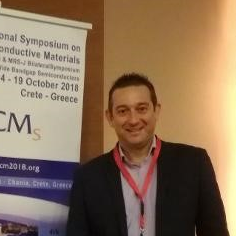Thin Film Gas Sensors
A special issue of Sensors (ISSN 1424-8220). This special issue belongs to the section "Chemical Sensors".
Deadline for manuscript submissions: closed (31 May 2023) | Viewed by 26946
Special Issue Editor
Interests: sputtering; thin films; materials characterization; gas sensors; thermochromic materials; hydrothermal synthesis
Special Issues, Collections and Topics in MDPI journals
Special Issue Information
Dear Colleagues,
Gas sensors for toxic and hazardous gases such as NOx, SOx, H2, CH4, O3, volatile organic compounds (VOCs), etc. have been of great research interest for more than 50 years. Industries, automobiles, and hospitals are only a few of the sectors where there is a great demand for fast, accurate, and relatively inexpensive gas sensing devices. The explosive growth of advanced materials with superior properties over the last decade has enhanced the performance of gas sensors. Especially in the field of conductometric gas sensors, numerous new materials such as perovskites (inorganic and/or hybrid), in addition to the well-known metal oxide semiconductors, have been introduced and are currently investigated as gas sensing elements. Furthermore, a great number of techniques have been employed in order to deposit thin film gas sensors on various rigid and flexible substrates.
The scope of the present Special Issue is to focus on state-of-the-art recent advances regarding thin film gas sensors based on conductometric techniques. The topics that will be covered are
- Novel metal oxide semiconductors for gas sensing applications;
- Advanced materials as gas sensing elements and devices;
- p-type materials as gas sensors;
- Sensors for monitoring energy fuel gases (H2, CH4);
- Sensors for monitoring indoor air quality.
Dr. Gagaoudakis Emmanouil
Guest Editor
Manuscript Submission Information
Manuscripts should be submitted online at www.mdpi.com by registering and logging in to this website. Once you are registered, click here to go to the submission form. Manuscripts can be submitted until the deadline. All submissions that pass pre-check are peer-reviewed. Accepted papers will be published continuously in the journal (as soon as accepted) and will be listed together on the special issue website. Research articles, review articles as well as short communications are invited. For planned papers, a title and short abstract (about 100 words) can be sent to the Editorial Office for announcement on this website.
Submitted manuscripts should not have been published previously, nor be under consideration for publication elsewhere (except conference proceedings papers). All manuscripts are thoroughly refereed through a single-blind peer-review process. A guide for authors and other relevant information for submission of manuscripts is available on the Instructions for Authors page. Sensors is an international peer-reviewed open access semimonthly journal published by MDPI.
Please visit the Instructions for Authors page before submitting a manuscript. The Article Processing Charge (APC) for publication in this open access journal is 2600 CHF (Swiss Francs). Submitted papers should be well formatted and use good English. Authors may use MDPI's English editing service prior to publication or during author revisions.
Keywords
- metal oxide semiconductors
- perovskites
- thin films
- gas sensors






